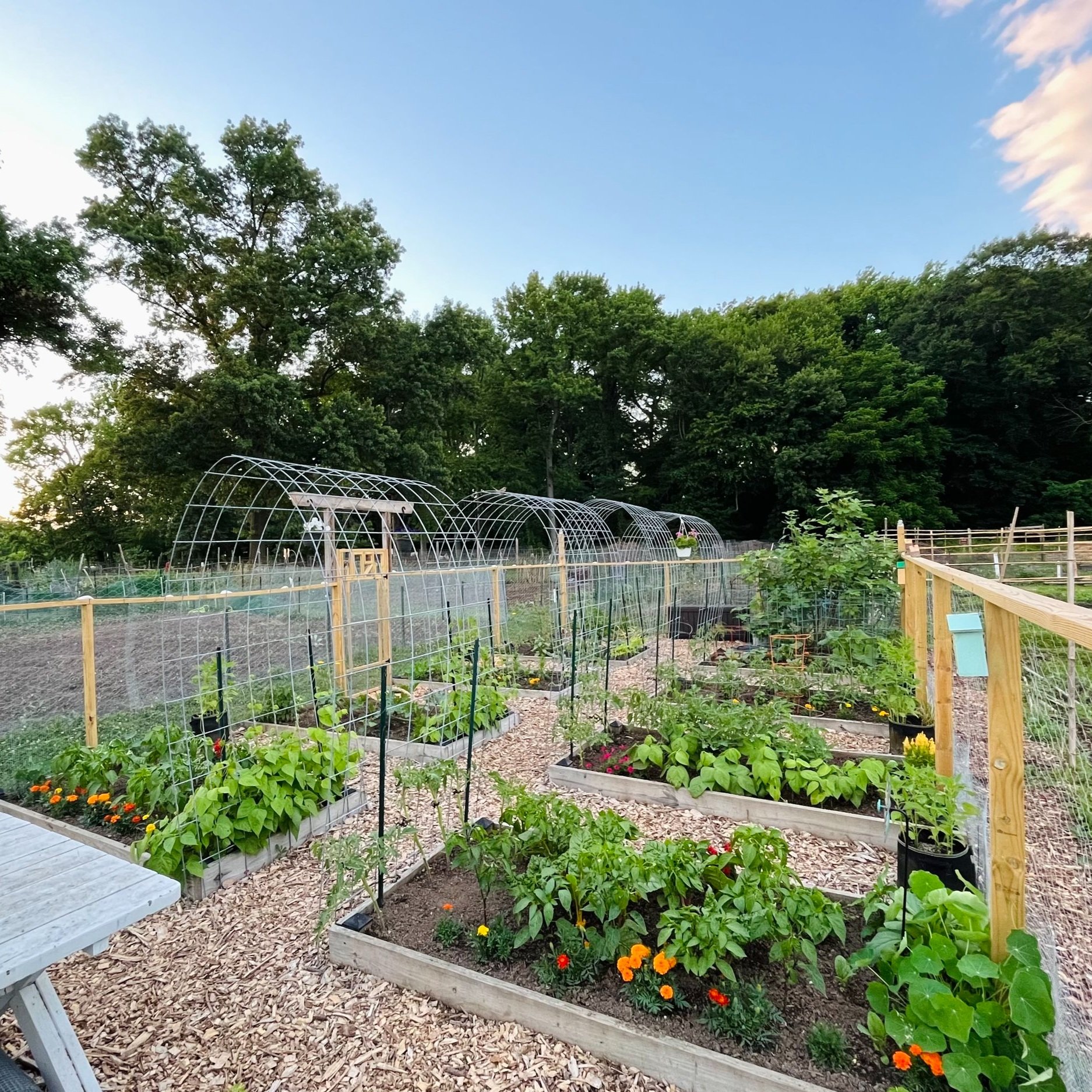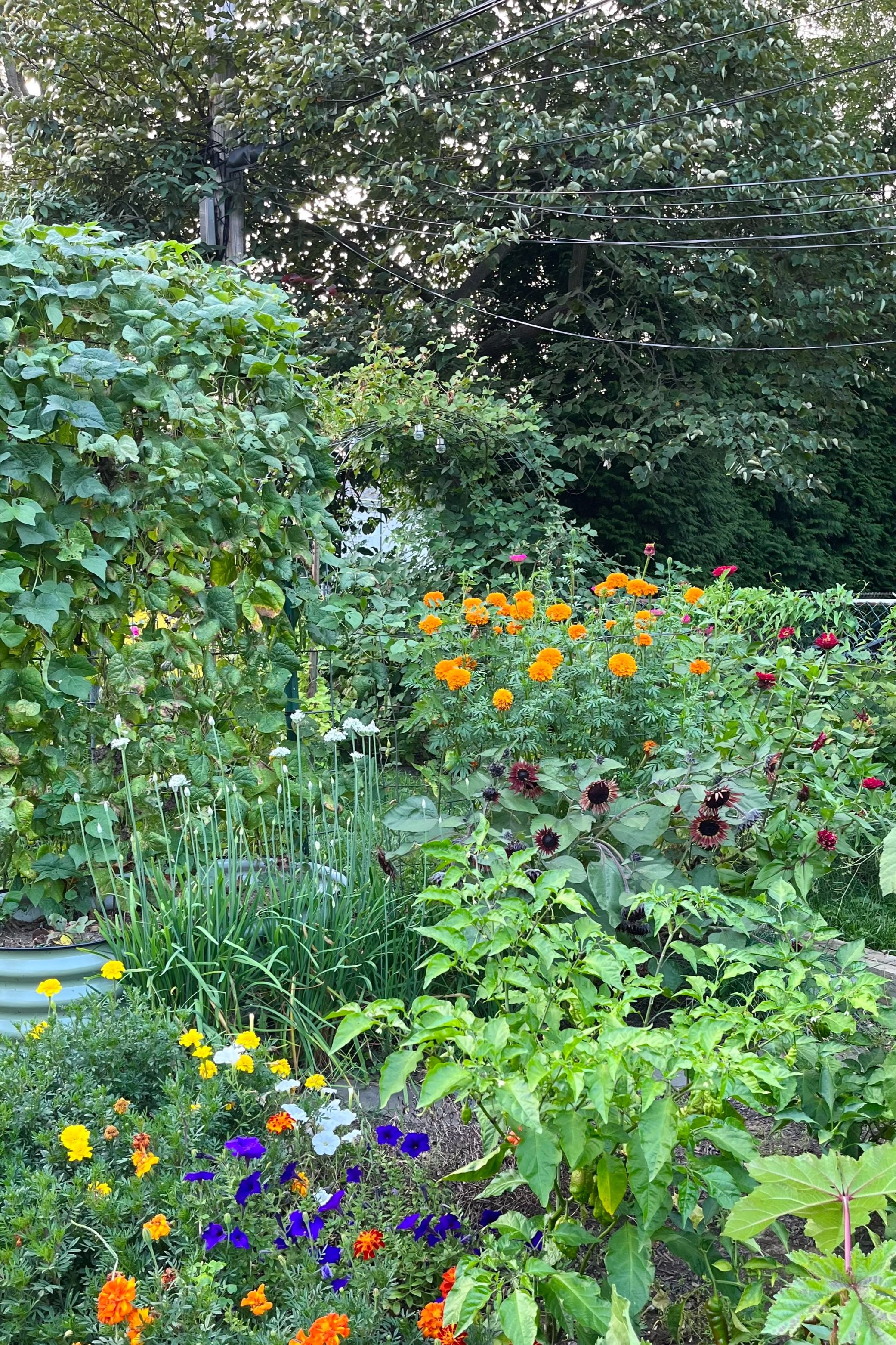Small-Space Gardening: Design Tips and Inspiration
So, you've chosen the perfect spot for your garden, and you've thought about what you'd like to grow. Now comes the fun part: planning and designing your garden space!
Whether you're a seasoned gardener or just getting started, this phase is where your creativity can truly blossom. It's important to consider your goals and lifestyle while being mindful of your available space. Whether it’s a small apartment balcony or a lush food forest, the tips in this blog will help you make the most of your garden. Keep reading to learn about the different types of gardening, design tips, and planting methods.
Choosing a gardening type:
One of the first decisions you'll need to make is the type of garden you want: in-ground, raised beds, or containers. Each method has its own pros and cons:
In-Ground Gardening
Generally the most budget-friendly option, in-ground gardens can be established with minimal upfront costs. However, if you are starting from scratch, this could also be the most labor-intensive option. You can choose to remove the grass manually and amend the soil or use the no-dig method to get your garden started. Proper drainage and ongoing maintenance like weeding can also present challenges.
Raised Bed Gardening
While it requires more initial investment, raised bed gardening offers several advantages, including soil customization, better drainage, fewer weeds, and easy plant access. It's an excellent choice for those with limited space or looking for a more manageable gardening experience.
Cedar raised beds
Cedar raised beds are naturally resistant to rot and pests, making them a durable and long-lasting choice for any garden. They are eco-friendly and sustainably sourced, while their warm, rustic appearance adds natural charm to your outdoor space. Though they come with a higher upfront cost, the quality and longevity make them a worthwhile investment.
Metal raised beds
Metal raised beds, typically made from galvanized steel, offer unmatched durability and pest resistance, requiring virtually no maintenance over time. Their sleek, modern design enhances the aesthetic of your garden while ensuring years of reliable performance. The slightly higher price reflects their premium quality and long-term value, perfect for gardeners seeking a low-maintenance solution.
Container Gardening
Perfect for small spaces and beginners, container gardening lets you get started with gardening without a big commitment. Containers are relatively inexpensive and can be placed anywhere with sufficient sunlight, making them versatile and accessible.
In our garden, we've embraced a mix of all three gardening methods: in-ground, raised bed, and container gardening. It's essential to consider your unique circumstances, preferences, and resources when deciding on the right garden style for you.
Vertical Gardening
No matter which garden type you choose, incorporating vertical gardening is a smart way to maximize your available space while promoting healthier plant growth and making harvesting easier. There are many vegetables that love to climb including tomatoes, pole beans, cucumbers, and Malabar spinach.
You can use a variety of materials to support your plants vertically, from traditional tomato cages to more elaborate pergolas and arbors. Simple twine or string, bamboo, and cattle panel fencing are excellent options for creating vertical structures on a budget.
In our garden, we use cattle panel fencing to create hoop trellises which provide sturdy, durable supports for our plants while creating a nice aesthetic.
Square Foot Gardening
Square foot gardening is a versatile method that can be applied to any garden type. It involves breaking your gardening bed into square-foot sections, making planning and spacing easy.
This method is particularly helpful for optimizing space, ensuring efficient use of resources, and facilitating easy plant rotation throughout the season.
You can also check out our free Plant Spacing Calculator.
Interplanting & Companion Planting
Interplanting involves planting two crops close to each other, saving space and resources. Often one or both of the crops provide a benefit to the other. For example, you can grow lettuce under a tall okra plant that will provide some shade while the lettuce acts as mulch.
Companion planting also involves pairing two different plants based on their mutual benefits, but just not as closely spaced as interplanting. Popular combinations include marigolds with tomatoes, which may deter pests, or basil with tomatoes, believed to enhance flavor. While scientific research on companion planting is limited, it certainly helps us gardeners sleep better at night and looks good, too.
Succession Planting
Rather than planting all your greens and root vegetables simultaneously, consider spacing out your plantings for a continuous harvest. Succession planting helps you make the most of your garden and minimizes the risk of waste.
Succession planting intervals vary by crop, with leafy greens like baby lettuce, spinach, and radishes sown every 7 days, while head lettuce, bok choy, bush beans, and peas thrive on 10-day intervals. Root crops such as beets, turnips, and carrots, along with arugula, are well-suited for 14- to 21-day intervals. Adjust planting schedules based on frost dates and growing conditions for a steady yet manageable harvest.
Incorporate these elements into your garden design and planning process to get one step closer to harvesting fresh food at home. Think of your garden as a canvas waiting to be painted by your creativity.
If you need extra help bringing your dreams to life, please reach out to request coaching or design services here.












